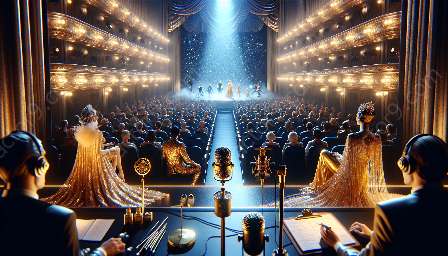Vocal projection is a crucial skill for voice actors, enabling them to convey emotions, portray characters, and engage audiences effectively. One of the key factors influencing vocal projection is resonance, which plays a significant role in shaping and amplifying the voice. In this comprehensive guide, we'll delve into the intricacies of resonance and its contribution to vocal projection, exploring its impact on voice actors' performances.
The Science of Resonance
Resonance refers to the process by which an object or a system vibrates at its natural frequency when exposed to external vibrations. In the context of vocal production, resonance occurs within the vocal tract, which includes the throat, mouth, and nasal passages. When the vocal folds produce sound, the air passing through the vocal tract interacts with its structures, causing resonance to occur. The resonating cavities within the vocal tract act as amplifiers, enriching and shaping the sound waves to produce a more powerful and vibrant voice.
Understanding Vocal Anatomy
For voice actors aiming to harness resonance for optimal vocal projection, a fundamental understanding of vocal anatomy is essential. The vocal tract consists of several key components, each of which influences the resonance and timbre of the voice. The size and shape of the oral cavity, the position of the tongue, and the openness of the throat all contribute to the resonant properties of the voice. By mastering control over these anatomical aspects, voice actors can manipulate resonance to achieve various vocal effects and enhance their projection capabilities.
Techniques for Harnessing Resonance
Effective vocal projection through resonance involves the application of specific techniques aimed at maximizing the amplifying potential of the vocal tract. One such technique is known as vocal placement, which involves consciously directing the resonance to specific areas within the vocal tract to achieve desired tonal qualities and volume. By visualizing the sound as emanating from different areas such as the chest, throat, or mask (the area around the nose and eyes), voice actors can modulate resonance to create a range of character voices and deliver impactful performances.
Breath Control and Support
Beyond manipulating the resonant properties of the vocal tract, voice actors must also develop efficient breath control and support to facilitate effective vocal projection. By mastering breath control techniques, such as diaphragmatic breathing, voice actors can optimize the airflow and pressure necessary for resonant voice production. This synergy between breath management and resonance allows voice actors to sustain powerful, well-supported projections without strain or fatigue, enhancing their vocal endurance and overall performance quality.
Artistic Expression through Resonance
Resonance not only serves as a technical tool for vocal projection but also as a means for voice actors to imbue their performances with emotional depth and expressive nuances. By harnessing resonance in conjunction with precise articulation and vocal intonation, voice actors can bring characters to life with authenticity and impact. The resonant qualities of the voice can convey a wide spectrum of emotions, from warmth and empathy to authority and intensity, enriching the storytelling experience for audiences.
Application in Voice Acting
Within the context of voice acting, resonance is a cornerstone of vocal versatility and character differentiation. Voice actors leverage resonance to create distinct vocal identities for various characters, ranging from larger-than-life personalities to subtle and nuanced roles. Through the skillful manipulation of resonance, voice actors can embody diverse personas and effectively communicate the essence of each character, captivating listeners and adding depth to narrative performances.
The Continual Refinement of Resonance
For voice actors committed to honing their craft, the mastery of resonance is an ongoing journey of exploration and refinement. Through consistent training and vocal exercises, voice actors can refine their control over resonance, expanding their vocal range and projection capabilities. By actively experimenting with resonance and seeking feedback, voice actors can elevate their performances, infusing their interpretations with heightened resonance that captivates and resonates with audiences.
Implications for Vocal Health
While resonance is integral to vocal projection, responsible and mindful utilization is crucial to safeguarding vocal health. Prolonged misuse of resonance, such as excessive strain on the vocal cords or overreliance on specific resonance placements, can lead to vocal fatigue and strain. Therefore, voice actors should prioritize vocal wellness practices, including regular vocal warm-ups, hydration, and vocal rest, to maintain the balance between effective projection and long-term vocal well-being.
Conclusion
Resonance stands as a cornerstone of vocal projection, offering voice actors a powerful tool for shaping their performances and engaging audiences. By understanding the mechanics of resonance and mastering the techniques for harnessing its potential, voice actors can elevate their vocal projection, expressiveness, and character portrayals with clarity and impact. Through the continual exploration of resonance and its artistic application, voice actors can unlock the full spectrum of their vocal capabilities, leaving a lasting impression through their resonant performances.




























